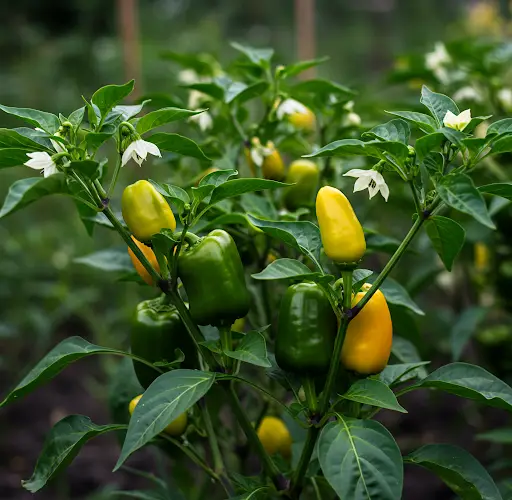A Unique and Effective Way to Plant Pepper Plants for Long-Lasting Nutrition
Pepper plants thrive in nutrient-rich, well-drained soil, and there’s a simple yet unconventional method that not only promotes healthy growth but also provides a steady supply of organic nutrients throughout the growing season. This technique ensures the plant puts more energy into producing fruits rather than just leaves—leading to stronger plants and bigger harvests. Here’s how to do it.
Step 1: Prepare the Planting Area
Start by digging a large hole in the planting bed. This method works well in garden beds, raised beds, or even large containers—as long as they allow for good drainage and root expansion. The hole should be deep and wide enough to hold a generous amount of organic matter. This buried organic matter will break down slowly, releasing nutrients over time and reducing the need for frequent fertilization.
Step 2: Add Kitchen Waste
Once your hole is ready, fill it with uncooked kitchen waste. This includes fruit and vegetable peels, used tea leaves, coffee grounds, and garden trimmings like wilted leaves. Avoid cooked or oily food scraps, as they can attract pests and decompose poorly.
This kitchen waste serves as a rich source of organic matter, acting as a slow-release fertilizer. As it breaks down, it continuously enriches the soil with nutrients essential for plant growth—especially beneficial in the later stages of the plant’s life when it’s fruiting heavily.
Step 3: Enhance with Worm Castings
To accelerate the decomposition of the kitchen waste and introduce beneficial microbes, add a layer of worm castings on top. Worm castings are packed with nutrients and beneficial bacteria that aid in the breakdown of organic matter while improving soil texture and fertility.
This not only speeds up the nutrient release process but also enhances the overall microbial health of the soil, leading to stronger, more disease-resistant plants.
Step 4: Add Mustard Cake Powder
Next, sprinkle a small amount of mustard cake powder over the worm castings. Mustard cake is a byproduct of mustard oil extraction and is rich in essential nutrients like nitrogen, phosphorus, and potassium. These macronutrients support healthy plant growth, root development, and fruit production.
Additionally, mustard cake has mild pesticidal properties, helping to naturally deter harmful soil-borne pests and diseases. This ensures that pepper plants remain protected throughout the season.
Step 5: Cover with Soil
Now, refill the hole using the soil that was originally dug out. Gently cover the kitchen waste, worm castings, and mustard cake, ensuring the surface is level and firm but not compacted. This top layer of soil traps moisture, supports microbial activity, and protects the organic layers below as they begin to decompose.
Step 6: Top Off with More Worm Castings
For a final nutrient boost, apply a thin layer of worm castings on top of the filled soil. This top dressing improves soil structure, enhances water retention, and offers a nutrient-rich environment for young plants to establish themselves.
This surface layer also ensures that the topsoil stays moist longer, reducing the need for frequent watering—especially helpful during the warmer months when peppers are actively growing.
Step 7: Plant the Pepper Seedlings
With your soil now prepared, it’s time to plant your pepper seedlings. Create small holes in the top layer of soil and gently place the seedlings into them, covering the roots completely. Be sure to space the plants adequately so they have room to grow and receive sufficient airflow and sunlight.
Proper spacing also reduces the risk of fungal infections and encourages better fruit production.
Step 8: Water Generously
Once the seedlings are in place, water them thoroughly. A deep watering helps settle the soil around the roots and activates the decomposition process of the kitchen waste underneath. As the waste breaks down, it will begin to release nutrients, which the plant roots can readily absorb.
Watering deeply also encourages the roots to grow downward, creating a more stable and resilient plant.
A Sustainable and Productive Growing Method
As the growing season progresses, the buried organic matter will continue to decompose, supplying the plants with a steady flow of nutrients. This reduces the need for additional fertilizers and minimizes maintenance.
The benefits are clear: healthier, more productive pepper plants with stronger resistance to disease and stress. At the same time, you’re recycling kitchen waste, enriching your soil naturally, and reducing your garden’s environmental footprint.
By adopting this method, gardeners can ensure that their pepper plants remain well-fed, fruit-heavy, and vibrant throughout the season—using a simple, low-cost, and eco-friendly approach.



